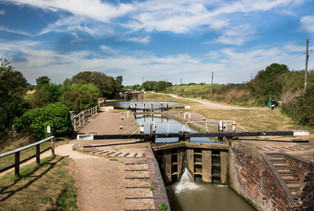Leading The Witness
- halkidikiskipper
- Apr 4, 2021
- 2 min read
The weather's not been great recently, but this week for the first time this year we had a couple of warm sunny days. The result was a trip to Stowe Gardens in Buckinghamshire, which are so photogenic and well worth a visit if you're in the area (not far from Buckingham).
There's always new things to photograph at Stowe, new compositions, new angles we haven't spotted before or maybe it's just something simple like the light is different. However one of us almost always takes the picture below, we just love it.
It's no accident that this picture at Stowe looks so good, it's because of the composition and specifically leading lines. Leading lines lead your eyes into the picture, they give the picture meaning, depth and a story. In this case the line, the path, leads your eyes through the bridge and winds it's way up the hill to the Gothic Temple. When I look at this picture it makes me realise how important leading lines are and has made me think that leading lines appear in our pictures quite a bit. So I thought I'd share a few recent examples that demonstrate how leading lines can be used.
The first two examples are of Milton Keynes in the snow last month and the third is the Broad Walk by the Grand Union Canal with beautiful Golden Hour light (there's another recent blog on this subject as well). As with the Stowe picture these pictures show that using paths is a really easy way to use leading lines to make a picture more interesting.
Canals are also great places to create pictures using leading lines, in fact it's difficult to take a picture without a leading line. Given this advantage of always having obvious leading lines, before you take a picture by the canal, just have a think about how the leading line of the canal will work with the image you're creating.
Beaches are also often full of leading lines. I've chosen two examples, the first a picture of a sea defence at Camber Sands, the second a board walk at Dungeness and the third almost the same picture used as a backdrop for a selfie.
The last example is of the drills of a potato field. I really like this, firstly because of the texture and pattern of the drills and secondly because it tells a story, the leading line of the drills leads your eyes to the harvester just over the top of the field.
So leading lines are an easy way to elevate your pictures to another level, to make them more interesting. Leading lines give your pictures context and really help you tell tell a story.
More soon,
Vaughan




























Comments